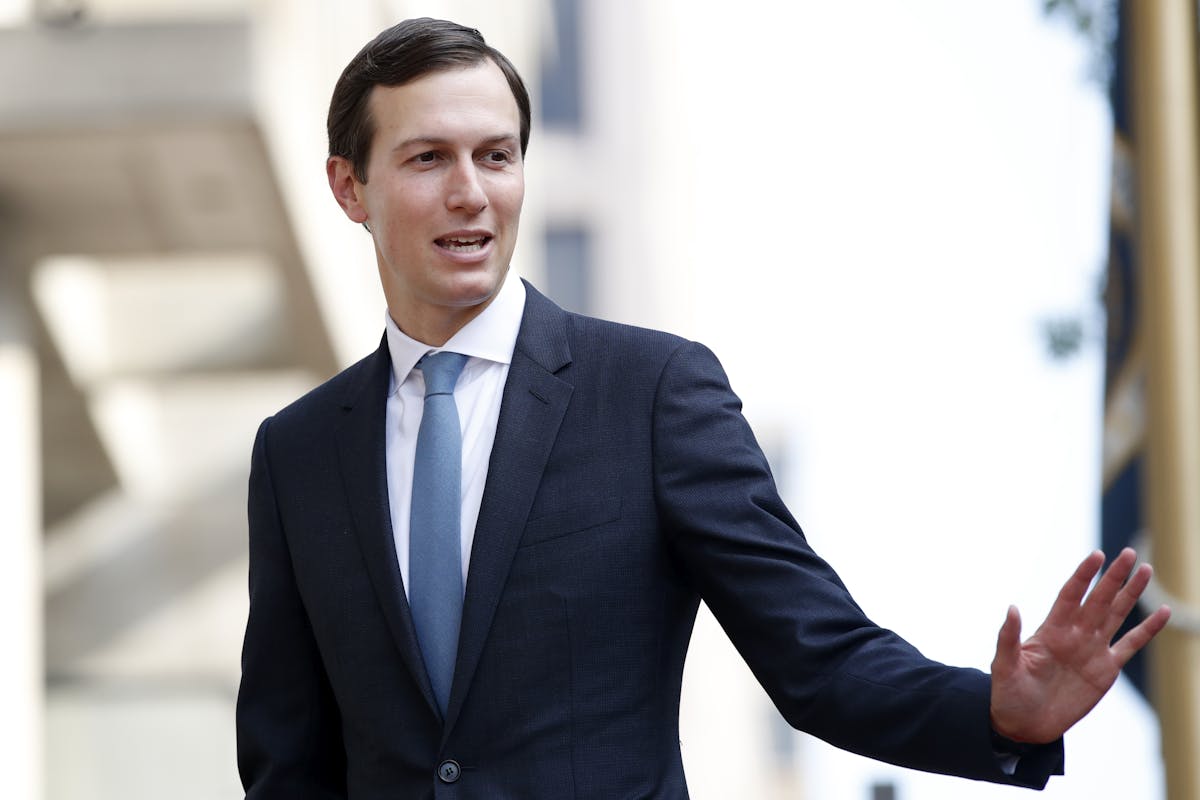Jared Kushner on the Beach
‘If you think about all the money that’s gone into this tunnel network and into all the munitions,’ asks the Abraham Accords visionary, ‘if that would have gone into education or innovation, what could have been done?’

The remarks from President Trump’s son-in-law, Jared Kushner, that “Gaza’s waterfront property could be very valuable … if people would focus on building up livelihoods” will be — already is being — met with a storm of criticism. He made the remarks the other week at Harvard, where he also shared that “it’s a little bit of an unfortunate situation there, but from Israel’s perspective I would do my best to move the people out and then clean it up.”
Is he wrong? Not in our view. Hamas’s assault on October 7 and the ensuing war have been catastrophic. Mr. Kushner is being accused of callousness. More like truth telling, in our view, about how Gaza became a terrorist enclave and the folly of envisioning a better future so long as Hamas obtains. Rather than lecture Prime Minister Netanyahu on Rafah, the Biden administration would do better to heed an architect of the Abraham Accords.
It is well to remember that in 2005, as Prime Minister Sharon prepared to pull Israeli civilians and soldiers out of the coastal strip — one can debate that decision at another time — the ex-president of the World Bank, James Wolfensohn, became Middle East envoy for the Bush administration. He hatched what the New York Times called an “unusual arrangement” to help Gaza’s future. Even in hindsight, it puts into relief what Gaza could have been.
Mr. Wolfensohn’s plan — he donated $500,000 of his own money to it — was for American donors to pay $14 million, processed through the Aspen Institute, to the Israelis uprooted from Gaza in exchange for their greenhouses. Mr. Wolfensohn told the Times that the arrangement would give “a real opportunity for the Palestinians.” The Grey Lady explains that the plan was “intended to keep valuable agricultural properties intact for Palestinian use.”
Those greenhouses, built on the sands of Gaza, were economic powerhouses. Clustered around the Gush Katif bloc, they churned out lettuce, organic vegetables, cherry tomatoes, and more. The total financial assets housed at Gush Katif surpassed $20 billion, and its produce was exported all over the world. Its bounty was such that philanthropists like Mortimer Zuckerman, Lester Crown, and Leonard Stern joined Mr. Wolfensohn’s efforts.
One can almost hear the paving stones of good intention sliding into place. Mr. Wolfensohn reckoned that “the Palestinians are trying to make this a peaceful transition — at least the Palestinian Authority is.” Soon, though, Hamas would win elections at Gaza, and PA officials would be pushed from rooftops. Years of chaos and war followed. Instead of greenhouses above ground, acres of tunnels below ground were built — for terrorists to hide.
Mr. Kushner marked this point well. “If you think about all the money that’s gone into this tunnel network and into all the munitions,” he said, “if that would have gone into education or innovation, what could have been done?” He adds on X that “the Palestinian people’s lives will improve only when the international community and their citizenry start demanding accountability from their leadership.” Where are Mr. Biden and Secretary Blinken?
Where is the United Nations? Just one month after Mr. Wolfensohn’s initiative was launched, NBC News reported that “Palestinians looted dozens of greenhouses,” walking off with “irrigation hoses, water pumps and plastic sheeting in a blow to fledgling efforts to reconstruct the Gaza Strip.” One security officer lamented that “We’ve tried to stop as many people as we can, but they’re like locusts.” He called the arrangement “a joke.”
If Gaza then resembled a farce, it is now firmly a tragedy. Mr. Kushner’s suggestion that Israel “try and bulldoze something in the Negev” to house civilian refugees or strike a deal with Egypt to allow for some egress from Gaza is a symptom of just how difficult it has become to envision the future of the strip. Any provision for the day after, though, best account for its greater resemblance to Somalia than Singapore. Before rebuilding the war must be won.

